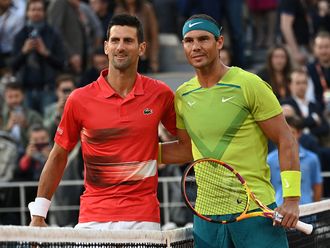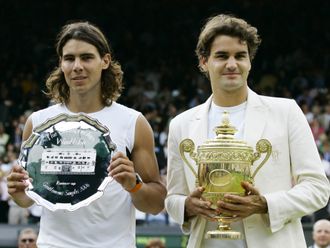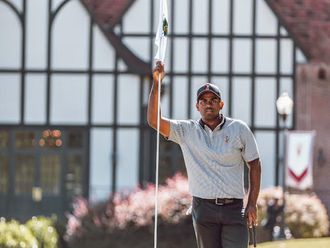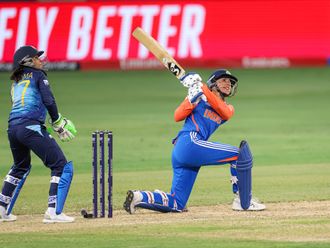
First he adjusts his shorts at the front, then the back. A pinch on the left shoulder is followed by another on the right shoulder before tucking his hair behind his ears. A tweak of the nose, a bit of attention to his cheeks, then a final wipe of the forehead with his forearm, and he’s ready to serve.
Rafael Nadal’s pre-serve routine is legendary. It follows a pattern bordering on Obsessive Compulsive Disorder. The routine helps the Spaniard focus before sending down a serve. And it has worked well for him. Well enough to land 22 grand slam titles, the second biggest haul behind Novak Djokovic’s 24.
Nadal’s statistics spanning a professional career of 24 years are staggering. After turning professional at 14, he made his Wimbledon debut three years later in 2003. At 19, he won the French Open, the first of his 22 grand slam titles. Seventeen years later when he called time on his career, the Spaniard had triumphed 14 times on the red shale of Roland Garros, where he has an incredible 112-4 win-loss record.
The King of Clay
No player has won so many matches in a grand slam tournament. Even for a player who learned his tennis on Spanish clay courts, that’s astounding. That’s why he’s called the King of Clay.
Clay may be the lefthander’s favourite surface, but he’d won the US Open four times and the Australian Open and Wimbledon twice. His epic duels with Roger Federer reflected a rivalry that raised tennis to great heights. The 2008 Wimbledon final is widely considered the greatest match of all time: Nadal won in five sets after four hours and 48 minutes of play.
He is a complete player, having won grand slam titles on all surfaces — a feat that eluded greats like Bjorn Borg, John McEnroe, Pete Sampras and several others.
Stats don’t do full justice to Nadal’s achievements. His wins came in an era where Djokovic and Federer shared 44 grand slam titles. That is a reflection of the player and his genius.
Djokovic continues to add to his 24 majors, while Nadal announced his retirement after being laid low by a series of injuries. Spain’s Davis Cup tie in November will be his last competition before he walks away from professional tennis.
“It has been some difficult years, these last two especially. I don’t think I have been able to play without limitations. It is obviously a difficult decision, one that has taken me some time to make. But in this life, everything has a beginning and an end,” Nadal said while announcing his retirement on social media.
The Nadal forehand
Nadal is one of the modern greats if not one of the best in history. What makes Nadal special? He didn’t have the sublime Federer forehand, but the Nadal forehand was like a cannon shot, brutal in execution and efficacy.
It was unorthodox, with the follow-through finishing over his head rather than the right shoulder. His muscular arm whipped it with so much topspin that the fiery, heavy forehands bounced very high. It isn’t easy returning them, as Federer would testify.
Power and athleticism were the cornerstone of Nadal’s game, built on his ability to return shots relentlessly with amazing accuracy. He scurried around the courts firing away crunching forehands and double-fisted backhands. It was so physical that it placed great demands on his body. So injuries weren’t surprising, and he struggled to shake some of them in the last couple of years.
The never-say-die spirit was the hallmark of Nadal. Times without number, he fought back from seemingly lost situations. Such was his mental fortitude that Nadal lifted his game to another level in the face of adversity. No point, no game or a match is ever over until Nadal is well and truly beaten.
Physicality may be the most dominant aspect of Nadal’s game, but he’s one of the genial players on the ATP (Association of Tennis Professionals) Tour. He’s close friends with his archrival Federer, whom he battled in several grand slam finals. The sight of Nadal sobbing uncontrollably along Federer, when the Swiss retired two years back after the two had played doubles in the Laver Cup, captured the essence of their friendship.
Nadal’s achievements will be remembered for long. “The important legacy is that all the people I have met during these 20 years have a good human memory of me,” he said.
He was indeed a people’s champion.












